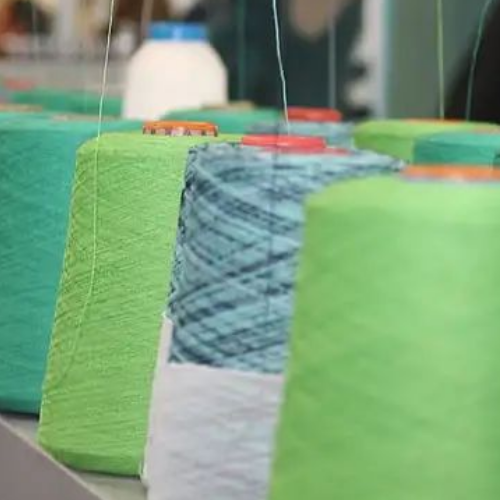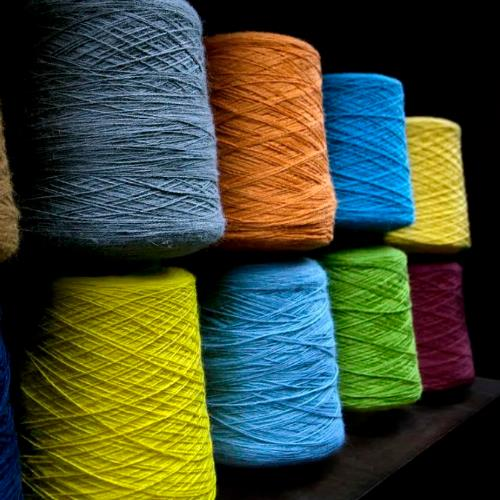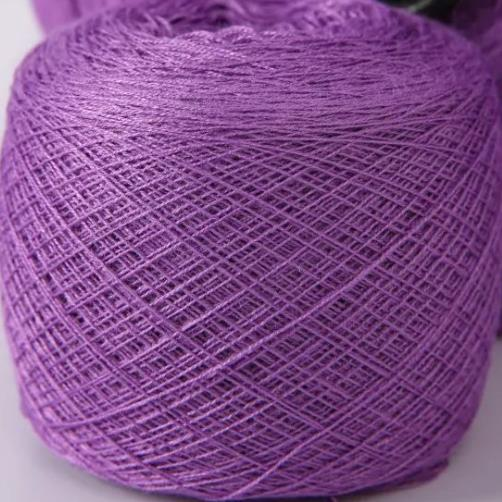What is the difference between knitting yarn and weaving yarn?
The difference between knitting yarn and weaving yarn is that knitting yarn requires higher evenness, good softness, certain strength, extensibility, and twist. In the process of forming knitted fabric on the knitting machine, the yarn is subject to complex mechanical action . Such as stretching, bending, twisting, friction, etc.
In order to ensure the normal production and product quality, the knitting yarn should meet the following requirements:
1. The yarn should have certain strength and extensibility.
Yarn strength is an important quality indicator of knitting yarns.
Because the yarn is subjected to a certain tension and repeated loading during the preparation and weaving process, the knitting yarn must have a certain strength.
In addition, the yarn is also subjected to bending and torsional deformation during the knitting process, so the knitting yarn is also required to have a certain degree of extensibility, so as to facilitate bending into a loop during the knitting process and reduce yarn breakage.
2. The yarn should have good softness.
The softness of knitting yarn is higher than that of weaving yarn.
Because the soft yarn is easy to bend and twist, it can make the loop structure in the knitted fabric uniform, the appearance is clear and beautiful, and at the same time, it can also reduce the yarn breakage during the weaving process and the damage to the looping machine.
3. The yarn should have a certain twist.
Generally speaking, the twist of knitting yarn is lower than that of weaving yarn.
If the twist is too large, the softness of the yarn will be poor, it will not be easily bent and twisted during weaving, and it is easy to kink, resulting in weaving defects and damage to the knitting needles;
In addition, yarns with excessive twist can affect the elasticity of the knitted fabric and skew the loops.
However, the twist of the knitting yarn should not be too low, otherwise it will affect its strength, increase the breakage during weaving, and the yarn will be bulky, making the fabric prone to pilling and reducing the wearability of the knitted fabric.
4. The linear density of the yarn should be uniform and the yarn defect should be less.
Yarn linear density uniformity is the uniformity of yarn evenness, which is an important quality index of knitting yarn.
The uniform yarn is beneficial to the knitting process and ensure the quality of the fabric, so that the stitch structure is uniform and the cloth surface is clear.
Because there are multiple loop-forming systems on the knitting machine, the yarn is fed into loops at the same time, so not only the thickness of each yarn is required to be uniform, but also the thickness difference between the yarns should be strictly controlled, otherwise horizontal stripes will be formed on the cloth surface. Defects such as shadows reduce the quality of the fabric.
5. The yarn should have good hygroscopicity.
The moisture absorption capacity of various fibers is very different, and the amount of moisture absorption varies with the temperature and humidity of the air.
The yarn used for knitting production should have certain hygroscopicity.
Under the same relative humidity conditions, the yarn with good hygroscopicity, in addition to its good electrical conductivity, is also conducive to the stability of the twist and the improvement of the extensibility of the yarn, so that the yarn has good weaving performance.
6. The yarn should have a good finish and a small coefficient of friction.
The knitting yarn should be free of impurities and oil stains as much as possible, and should be very smooth.
Unsmooth yarns cause severe wear and tear to machine parts, which are easy to damage, and there are many flying flowers in the workshop, which not only affects the health of workers, but also affects the productivity of the knitting machine and the quality of the fabric.
The yarn should have certain strength and extensibility.
The yarn should have good softness.
The yarn should have a certain twist.
The linear density of the yarn should be uniform and the yarn defect should be less.
The yarn should have good hygroscopicity.
The yarn should have a good finish and a small coefficient of friction.
Post time: Oct-14-2022



